.
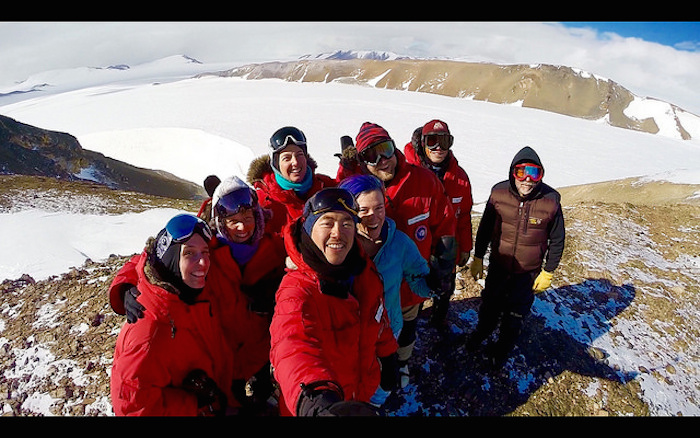
ANSMET team selfie from the North Miller Range, Antarctica. The team, from left: Ellen Crapster-Pregont, Cindy Evans, Nina Lanza, Constantine Tsang, Morgen Martinez, Jim Karner, Brian Rougeux and John Schutt had just finished a long day of hunting meteorites on the blue ice fields.
.
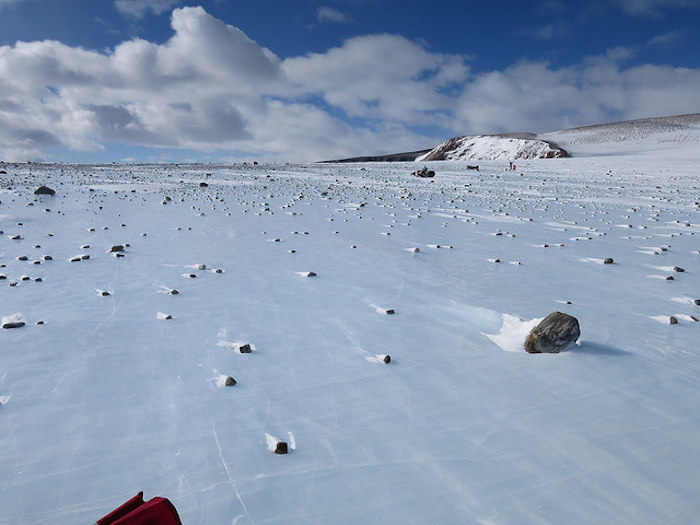
Blue ice field in the Miller Range, near the edge of a moraine. Moraines are piles of rocks deposited along the edge of a glacier. Often they are good hunting grounds for meteorites, but the samples from space are mixed in with lots of terrestrial rocks. Image Credit: NASA/Cindy Evans
.
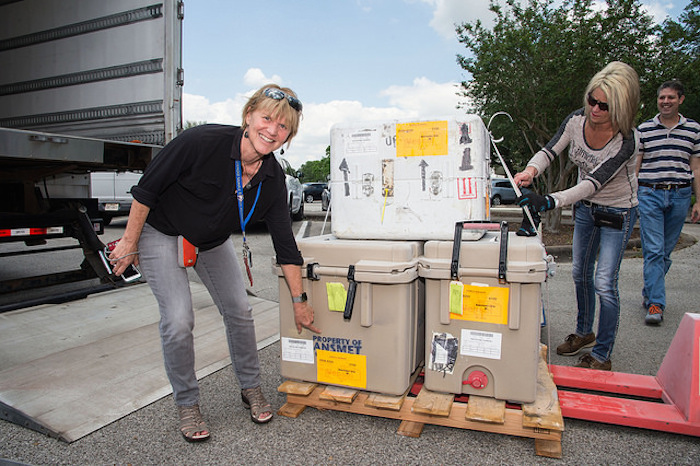
ANSMET Samples Arrive at Johnson Space Center
ANSMET 2015-2016 team member Cindy Evans points to the ANSMET property stamp on the frozen sample containers. Donna Castillo from the Astromaterials Research and Exploration Division facilitates the delivery to JSC while Antarctic Meteorite Curator Kevin Righter is happy to have the meteorites come home. Image Credit: NASA/James Blair
.
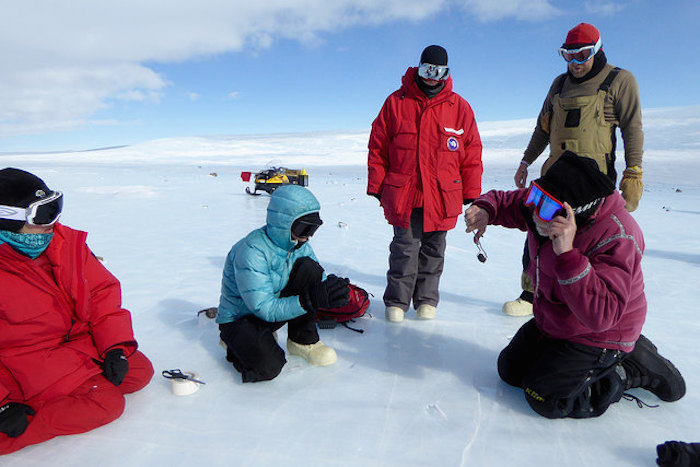
Examining a new find
Schutt, a mountaineer, examines a new find, holding the sample with clean tongs while the rest of the team prepares the sampling tag and bag. Image Credit: NASA/Cindy Evans
.
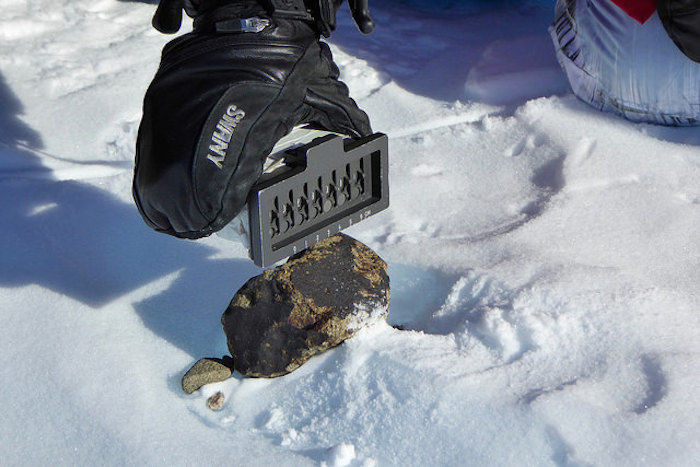
Meteorite
Striking gold—er, black. A meteorite in the rough. The black fusion crust, formed when the sample heated up in the Earth’s atmosphere as it was falling to the ground, helps the team spot samples in the field. Image Credit: NASA/Cindy Evans
.
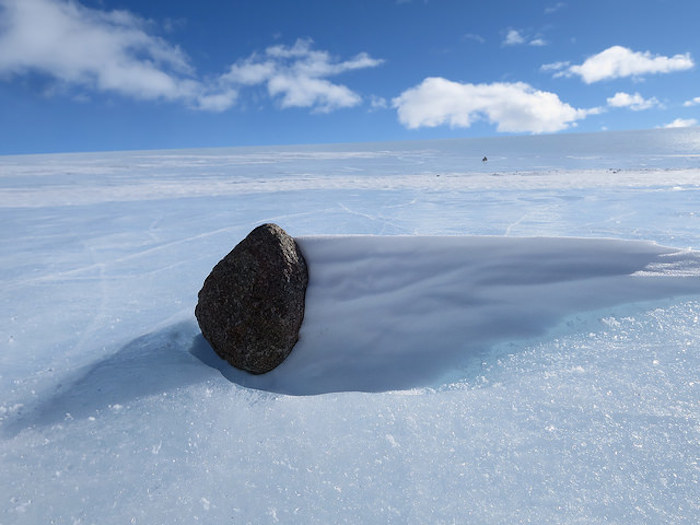
Meteorite
A meteorite on the blue ice field in the Miller Range. Image Credit: NASA/Cindy Evans
.
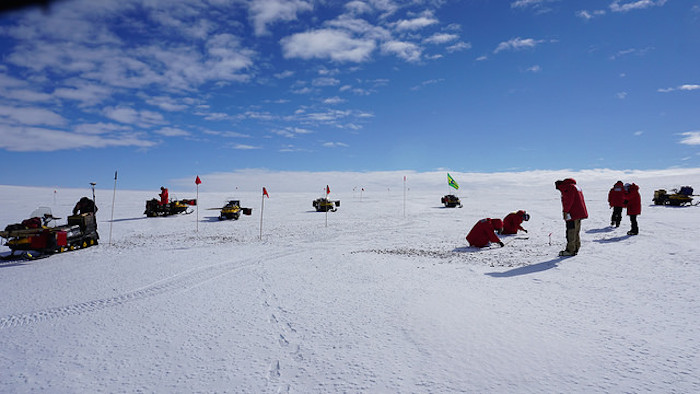
Searching for Meteorites
The ANSMET team searches for meteorites on the blue ice field in the Miller Range. Image Credit: NASA/Cindy Evans
.
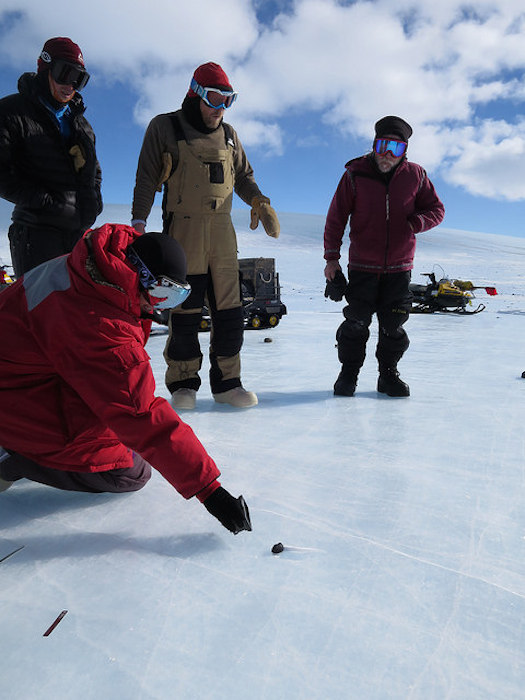
Collecting meteorites
The team examines a meteorite on the blue ice field in the Miller Range. Image Credit: NASA/Cindy Evans
.
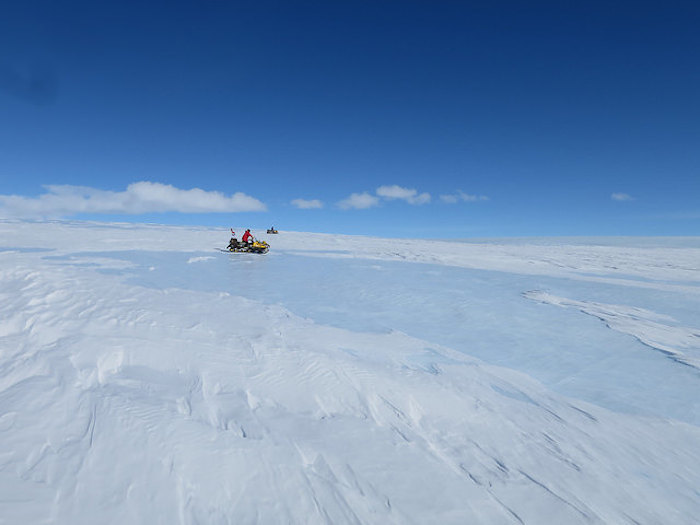
Searching for meteorites
Aboard snow machines, the team searches for meteorites on the blue ice field in Antarctica. Image Credit: NASA/Cindy Evans
Quelle: NASA
4371 Views
